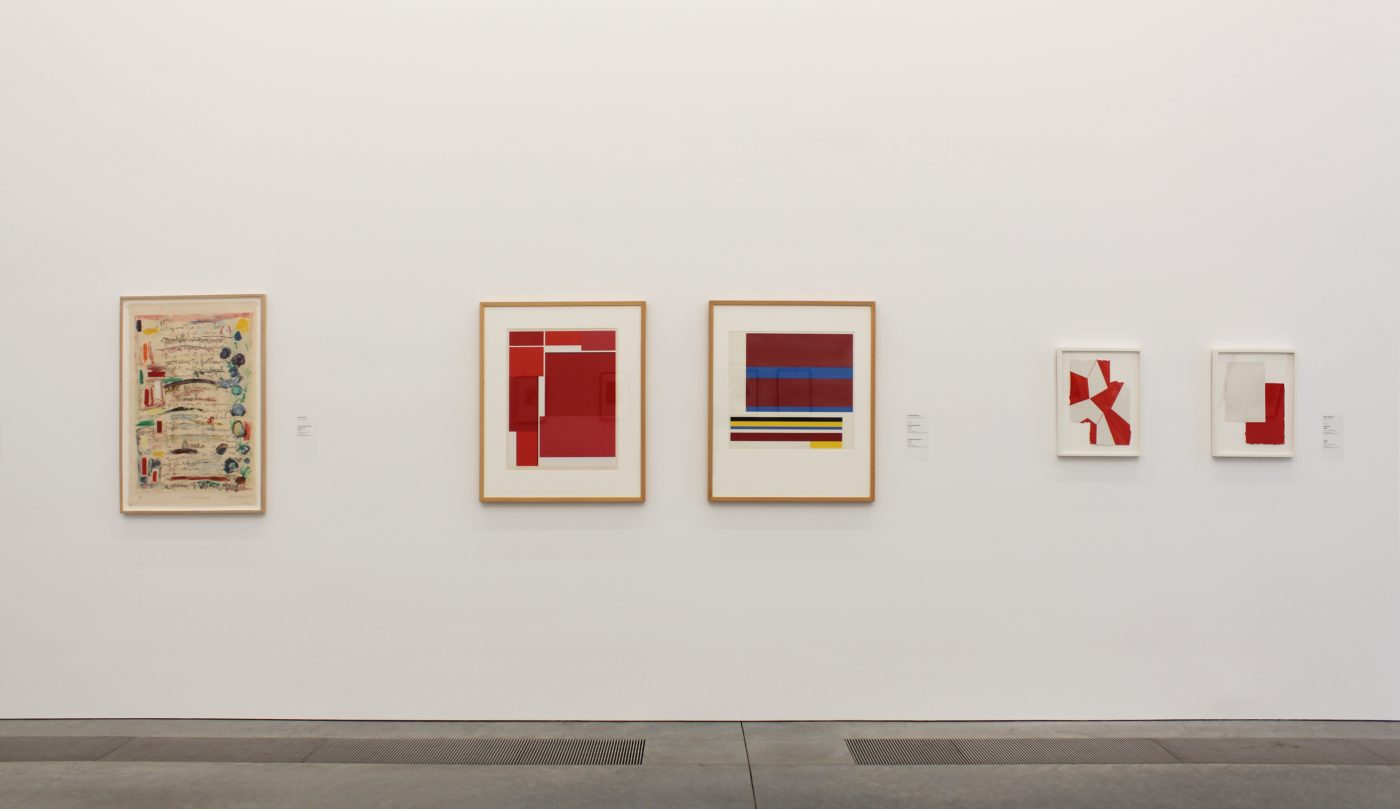This gallery continues the investigation of abstraction begun in Gallery One and works on paper by Ilya Bolotowsky, Mary Heilmann, Valerie Jaudon, and Jack Youngerman further reveal the process seen in their paintings on view there.
Gertrude Greene spent formative years in the early 1930s in Paris, where the sublime abstractions of Jean Arp (French, 1886–1966) inspired her work in two-and three-dimensions. The legacy of Surrealism is synthesized with Abstract-Expressionist gesture in Jimmy Ernst’s work Untitled from 1949 while drawings by Elaine de Kooning, Michael Goldberg, and Claude Lawrence map the evolution of gestural abstraction over five decades.
Alan Shields’s rollicking My Roller Derby Queen, a screenprint on fabric, shows the artist’s endlessly inventive use of materials and enduring allegiance to the grid. The grid appears again in Richard Kalina’s buoyant watercolor Cremona, a rigorous study in formal abstraction. Oaxaca, a watercolor by Stephen Mueller, evinces the artist’s conviction that abstract forms could have symbolic meaning and spiritual power; Joan Snyder has invented a highly personal mode of conveying meaning through loose brushwork, written notation, and an inventory of abstracted images.
With an X-acto knife, Stephen Antonakos cut angled and curved lines into handmade paper so that the sheet achieves a sculptural balance of light and shadow. Throughout his career, Robert Ryman has vigilantly pursued non-representational forms but his quest is at essence the pursuit of pictorial expression. Born in Oklahoma (then Indian Territory) in 1906, the artist Leon Polk Smith, who was Cherokee and raised with Chickasaw and Choctaw tribes, once remarked on his influences as an artist. “In the Indian’s philosophy, thinking, and the way of talking or telling stories, so much detail was left out, so much was abstract.”


